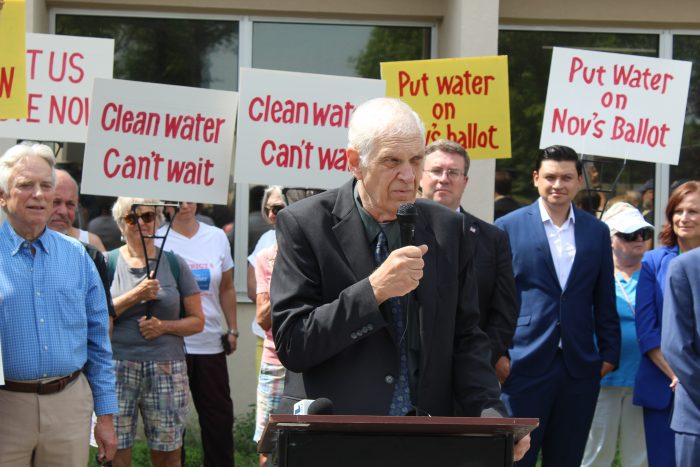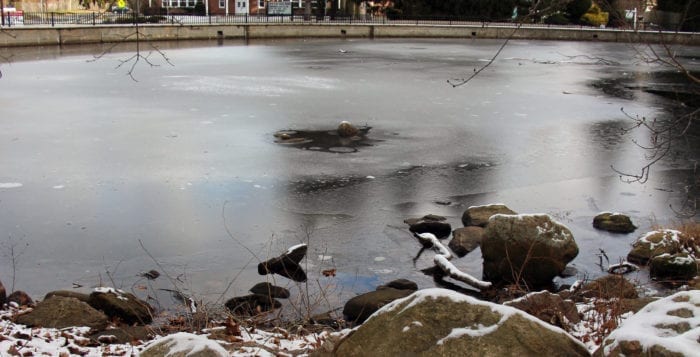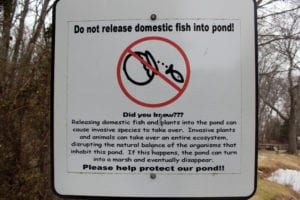By Samantha Rutt
Brookhaven Town Board held its recurring meeting on Tuesday evening, Dec. 19. Supervisor Ed Romaine (R) opened the meeting with a brief moment of silence to reflect on the giving nature of the holiday season and wished the town a clean bill of health and prosperity in the new year.
Following the moment of silence, Chief Fire Marshal Christopher Mehrman gave a brief presentation on the damages sustained from the Dec. 17-18 storm. Several photographs of the related damages accompanied the presentation. Although the fire marshal’s presentation concentrated on Fire Island and the barrier beaches, he explained that every community sustained some damage.
“Though we are mainly concentrated on the barrier beach, Fire Island, every community sustained some degree of damage,” Mehrman said.
The presentation provided a detailed estimate of the loss of height and width on the shoreline of the Fire Island Pines community. The loss of dunes will affect the overall protection of this area from the nearby ocean. Romaine emphasized the importance of recuperating from this loss.
“It is something that Councilman Foley (R-Blue Point), Councilman Panico (R-Manorville), and I warned about several months ago,” Romaine said. “Our fear would be exactly what has happened, threatening the stability of the island and several of the homes.”
Upon conclusion of the presentation, the meeting continued with its usual discourse before addressing the dedication of the Edward P. Romaine Nature Preserve, an approximately 8-acre property in East Moriches. The land is a mix of native grasses and shrubs that provide a habitat for various species and will be preserved for open space.
“There’s no better gift you can give than open space on an island that has sometimes been overdeveloped,” Romaine said.
“Edward P. Romaine, a long-standing elected official in Suffolk County and supervisor of the Town of Brookhaven for the past 11 years, has been an advocate to protect natural resources and the environment,” the town notes in its resolution. “It is the town’s desire to recognize the many contributions made by Edward P. Romaine to the Town of Brookhaven and the environment by naming this nature preserve in his honor.”
In conjunction with land preservation, a $60,000 grant — that the town will match — was approved as part of the Suffolk County Water Quality Protection and Restoration Program. The project will restore habitats along Cedar Beach by the removal of invasive plants, establishing native plant species, installing wildlife tunnels, promoting coastal resiliency, enhancing habitat, improving water quality in Mount Sinai Harbor and the Long Island Sound, and supporting the improvement of vulnerable local diamondback terrapin population.
Brookhaven Town Board will reconvene on Jan. 11. To learn more about the Dec. 19 meeting and future meetings, visit the Town of Brookhaven website: brookhavenny.portal.civicclerk.com.








